Pelvic Floor Physical Therapy
Pelvic floor disorders affect men and women of all ages. Whether you’re newly diagnosed with a pelvic floor condition or have been living with your symptoms for quite some time, you’ll find the care and support you need at The Back Clinic. All treatments are conducted one-on-one with the utmost respect for your privacy.
What is the Pelvic Floor?
The pelvic floor is a combination of muscles, ligaments and connective tissue that provide support for the pelvic organs – the bladder, rectum, prostate, vagina and uterus. Due to a number of factors including pregnancy or childbirth, surgery, heavy lifting, obesity, aging, and chronic medical conditions, over time the pelvic floor may become weak or painful.
Symptoms of Pelvic Floor Disorders
- Decreased bladder or bowel control
- Urinary frequency or urgency
- Chronic urinary tract infections
- Irritable/painful bladder
- Painful urination or defecation
- Chronic constipation
- Pelvic organ prolapse
- General pelvic, vaginal, perineal, or rectal pain
- Difficulty sitting
- Lower back, pelvic, sacroiliac, or hip pain
- Abdominal pain
- Pain during sexual intercourse
- Pain during or after pregnancy
- Complications from a surgical procedure such as hysterectomy, prostate surgery, or abdominal surgery
What is Pelvic Floor Rehabilitation?
Pelvic floor rehabilitation focuses on the muscles that make up the pelvic floor and the other supporting muscles of the entire pelvic girdle. Our therapists have completed extensive training to treat all pelvic floor conditions using a combination of skills and techniques to ensure each patient’s individual needs are addressed.
Treatment techniques include…
- Computer-assisted (EMG) biofeedback
- Muscle strengthening, re-education and relaxation techniques
- Stretching and self release techniques
- Manual therapy to address soft tissue, scar tissue and joint restrictions
- Bladder/bowel training
- Dietary modifications
- Electrical stimulation
- Ultrasound
- Postural correction
- Body mechanics education
- Visceral mobilization
- Extensive education and resources for long-term management of conditions
